Are electronics circuit analysis and worst-case circuit analysis the same? the 3 major differences
“Have you ever considered how we would convey our thoughts to each other’s without communication on any given day?”
It’s true,
Communication is the key to connecting with each other in this fast-paced world.
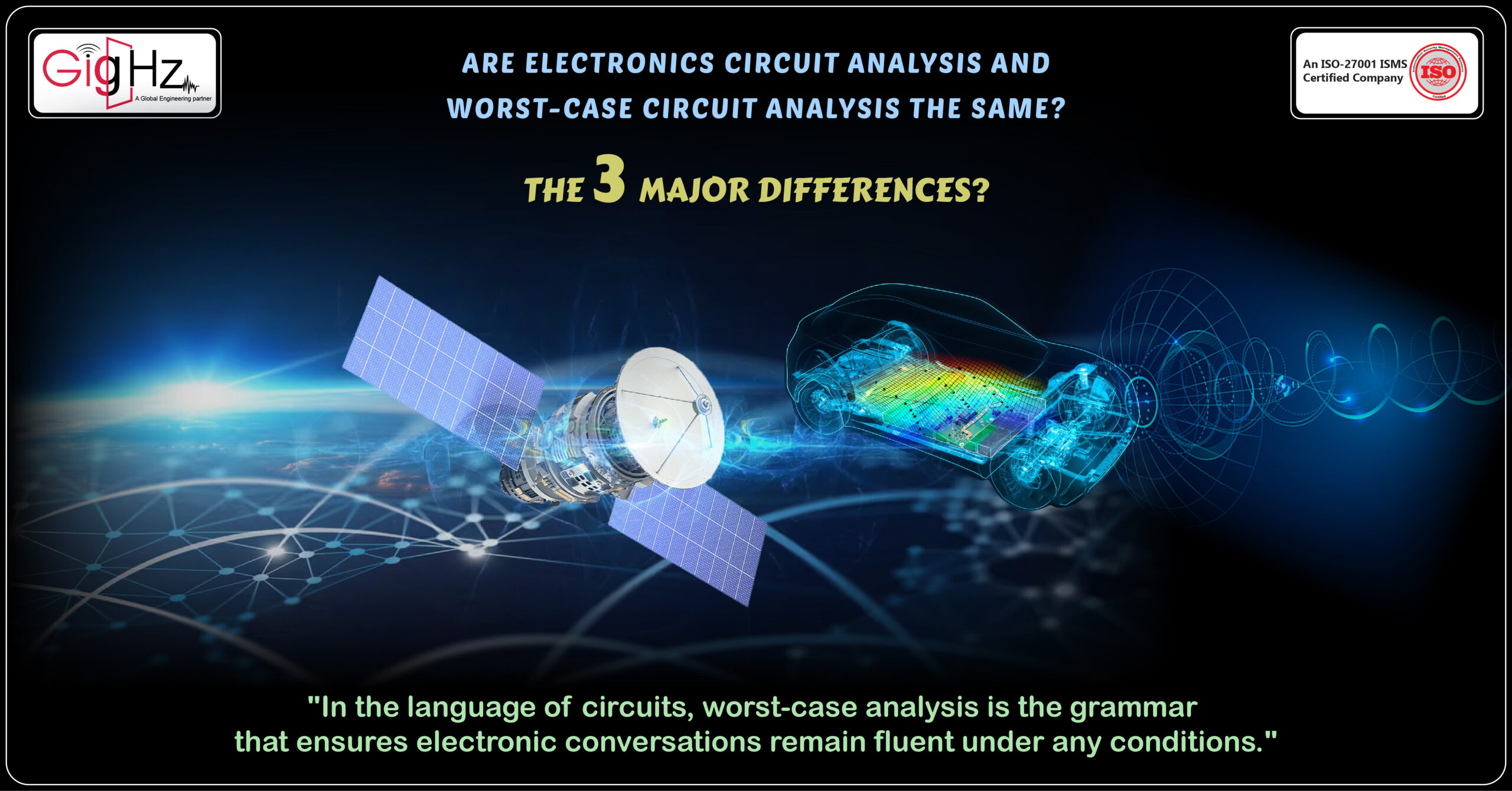

Category :
Published Date :
May 7, 2024
Category :
Published Date :
May 7, 2024
Category :
Published Date :
May 7, 2024
Whether it’s the simplicity of a landline phone or the versatility of a smartphone, both devices have contributed to the evolution of communication, enhancing our ability to stay in touch and share our lives with others.
“In the same way, the electronics world also requires communication between devices.
How can we determine if they are effectively communicating with each other?”
Yes, “Its through, when we analyse them, various types of analysis related to electronics come into play, including Electronics Circuit Analysis and Worst-Case Circuit Analysis(wcca).”
Lets see the electronics circuit analysis and worst-case circuit analysis are the same?
“Now, let’s immerse ourselves in it!”
Exploring Electronic Circuit Analysis and Worst-Case Circuit Analysis.
So, what does the Electronic Circuit Analysis entail?
When it comes to electronic circuit analysis, it’s all about thoroughly examining and fine-tuning how circuits perform under normal conditions.
This includes looking into things like signal integrity, voltage and current behavior, and making sure everything works as it should within the provided design limits.
The goal here is to ensure that the circuit does what it’s supposed to do when operating under everyday circumstances, laying the groundwork for dependable and effective performance.
In the automotive industry, electronic circuit analysis plays a pivotal role in the development of modern vehicles.
We here utilize circuit analysis techniques to optimize the electrical systems within automobiles, ensuring efficient power distribution, reliable signal processing, and overall performance enhancement.
By conducting comprehensive analysis and fine-tuning the circuits, we can guarantee the seamless operation of various electronic components such as infotainment systems, engine control units, and advanced driver-assistance systems (ADAS) under diverse driving conditions.
This meticulous approach establishes a foundation for dependable and efficient performance, ultimately contributing to the safety and functionality of the vehicle.
Upcoming to the worst-case circuit analysis, what it is?
Ever wondered how electronic circuits are designed to withstand extreme conditions?
That’s where worst-case circuit analysis (WCCA) comes in.
It’s all about identifying potential risks and ensuring that the circuit functions even under the most extreme circumstances.
This means taking into account things like component tolerances and environmental changes that could cause the circuit to perform poorly or fail.
By testing the circuit under these extreme conditions, WCCA helps make sure that the design is strong and dependable.
In the automotive industry, worst case circuit analysis is crucial for ensuring the reliability of electronic systems in vehicles.
Let’s consider the electronic control unit (ECU) in a car.
We use WCCA here, to analyze the ECU’s performance under extreme temperature variations, voltage fluctuations, and other adverse conditions that it might encounter during normal operation.
This ensures that the ECU can function reliably in all scenarios, contributing to the overall safety and performance of the vehicle.
Are Electronics circuit analysis and Worst-case circuit analysis the same? the 3 major differences
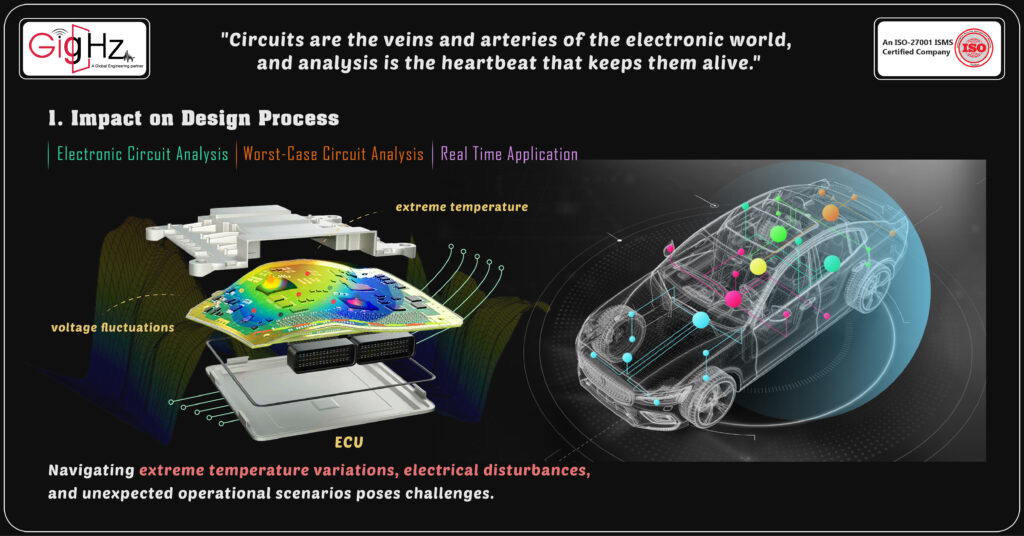
Electronic circuit analysis and worst-case circuit analysis are interconnected, with the former addressing routine performance considerations and the latter specializing in extreme condition assessments to guarantee circuit resilience.
1. Impact on Design Process
Electronic Circuit Analysis
Electronic Circuit Analysis plays a pivotal role in shaping the design process by aiming to maximize the performance and efficiency of the circuit under nominal operating conditions.
This involves fine-tuning the circuit’s parameters and components to achieve optimal functionality within expected boundaries.
The emphasis is on achieving the best possible performance while staying within the specified operational limits.
Worst-Case Circuit Analysis
Conversely, Worst-Case Circuit Analysis significantly influences the design process by prioritizing the enhancement of robustness and reliability under adverse scenarios.
The analysis delves into identifying potential weak points in the circuit design and aims to fortify the system to withstand unforeseen challenges posed by component variations, environmental stressors, and extreme operating conditions.
Real Time Application of the Analysis
In the development of a sensor circuit for automotive applications, electronic circuit analysis ensures precise and reliable signal detection under regular driving conditions.
This involves optimizing the circuit for accurate data acquisition within the expected range of temperature and voltage fluctuations commonly encountered in vehicle environments.
In contrast, WCCA comes into play to evaluate the circuit’s resilience to extreme temperature variations, electrical disturbances, and unexpected operational scenarios, ensuring that the sensor maintains its functionality even in the harshest automotive conditions.
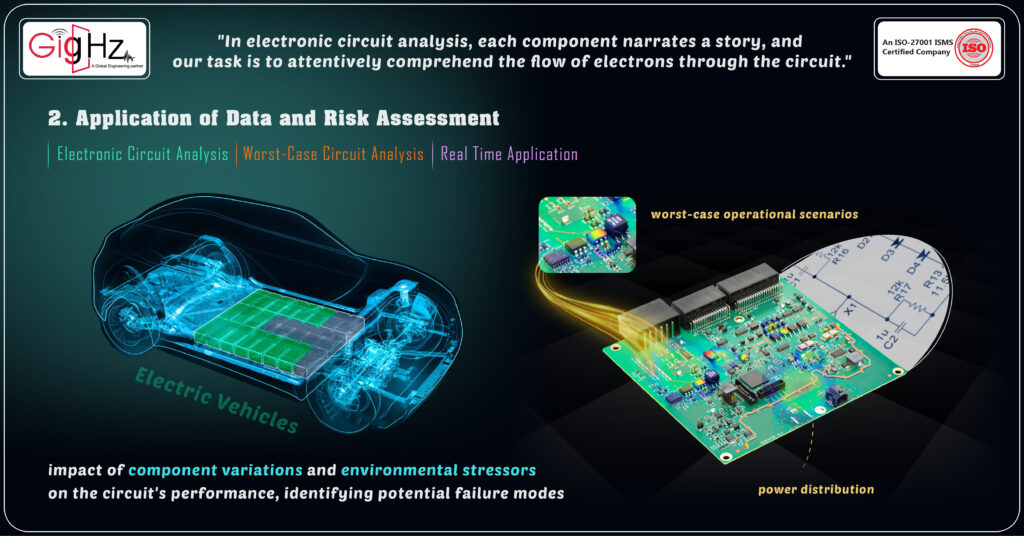
2. Application of Data and Risk Assessment
Electronic Circuit Analysis
Electronic Circuit Analysis plays a pivotal role in shaping the design process by aiming to maximize the performance and efficiency of the circuit under nominal operating conditions.
This involves fine-tuning the circuit’s parameters and components to achieve optimal functionality within expected boundaries.
The emphasis is on achieving the best possible performance while staying within the specified operational limits.
Worst-Case Circuit Analysis
Conversely, Worst-Case Circuit Analysis significantly influences the design process by prioritizing the enhancement of robustness and reliability under adverse scenarios.
The analysis delves into identifying potential weak points in the circuit design and aims to fortify the system to withstand unforeseen challenges posed by component variations, environmental stressors, and extreme operating conditions.
Real Time Application of the Analysis
In the development of a sensor circuit for automotive applications, electronic circuit analysis ensures precise and reliable signal detection under regular driving conditions.
This involves optimizing the circuit for accurate data acquisition within the expected range of temperature and voltage fluctuations commonly encountered in vehicle environments.
In contrast, WCCA comes into play to evaluate the circuit’s resilience to extreme temperature variations, electrical disturbances, and unexpected operational scenarios, ensuring that the sensor maintains its functionality even in the harshest automotive conditions.
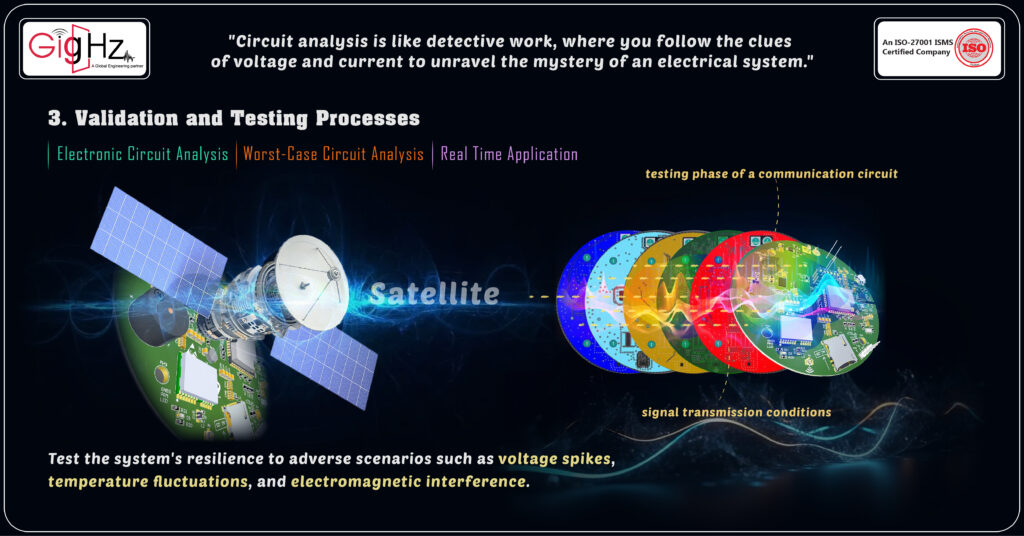
3. Validation and Testing Process
Electronic Circuit Analysis
Electronic Circuit Analysis often involves validation and testing processes focused on verifying the circuit’s performance under typical operating conditions.
This includes utilizing simulations, modeling, and prototyping to validate the functionality and efficiency of the circuit within the specified design parameters. The emphasis is on ensuring that the circuit performs as intended under normal operational scenarios.
Worst-Case Circuit Analysis
Conversely, Worst-Case Circuit Analysis requires validation and testing processes that specifically target extreme scenarios and potential failure modes. This involves subjecting the circuit to rigorous testing under conditions that simulate component variations, environmental stressors, and unexpected operational scenarios. The focus is on validating the circuit’s robustness and reliability under adverse conditions, ensuring that it can withstand unforeseen challenges without compromising its functionality.
Real Time Application of the Analysis
In the testing phase of a communication circuit, electronic circuit analysis validates the circuit’s performance under typical signal transmission conditions, ensuring that it meets the specified communication standards and data transfer rates.
Conversely, WCCA involves subjecting the circuit to rigorous testing under extreme conditions, such as voltage spikes, temperature fluctuations, and electromagnetic interference, to validate its resilience to adverse scenarios.
Our Notable Upgrade: Engineering as a Service (EaaS)
Engineering is constantly evolving, and it’s exciting to see how Engineering as a Service (EaaS) is staying ahead of industry demands.
By leveraging ECAD, MCAD, and Analysis & Simulation, we deliver comprehensive solutions that cover every aspect of the engineering process.
It’s incredible to see how seamlessly different disciplines now integrate. With EaaS, electronic design, mechanical design, and advanced analysis all come together under one roof.
This not only streamlines workflows but also enhances efficiency and collaboration, driving innovation like never before.
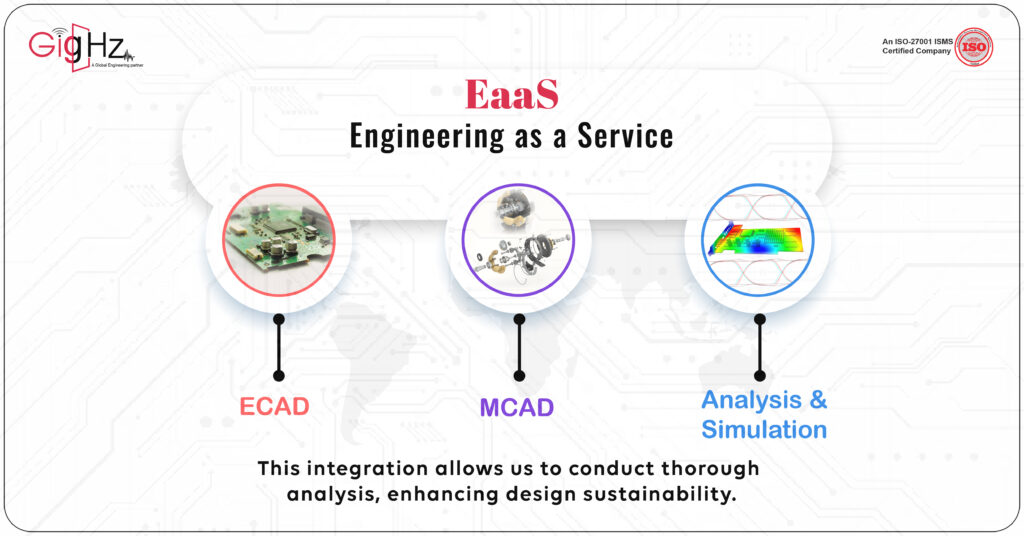
Conclusion
Based on the information gathered, it’s clear that electronics circuit analysis and worst-case circuit analysis are not exactly the same, worst case circuit analysis comes under the part of electronic circuit analysis.
The purpose of worst-case circuit analysis is to determine the worst expected possible circuit performance, accounting for factors such as potential defects, tolerances, environmental extremes, and aging effects.
On the other hand, general electronics circuit analysis may focus on understanding the overall behavior and performance of a circuit under normal operating conditions.
Make the First Move – Arrange Your Consultation! https://calendly.com/gighz/30min
